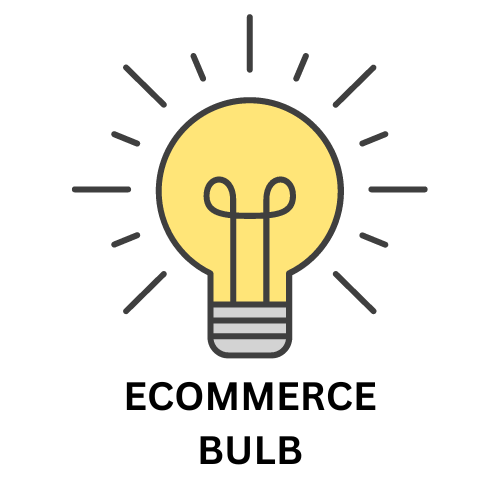We are going to talk in a brief about Optimizely Customer Journey Optimization.
What is Customer Journey Optimization?
Customer Journey Optimization (CJO) is the strategic process of enhancing the customer experience across all touchpoints, from initial awareness to post-purchase support. It involves understanding, mapping, and improving the customer’s path through various interactions with a brand.
Key Components of CJO:
- Customer Mapping: Identifying all touchpoints a customer interacts with the brand.
- Journey Analysis: Understanding customer behavior, preferences, and pain points at each touchpoint.
- Experience Enhancement: Improving interactions, content, and messaging to create a seamless experience.
- Data-Driven Optimization: Using analytics to measure the impact of changes and continuously refine the journey.
Benefits of CJO:
- Increased customer satisfaction: By addressing customer needs and preferences.
- Improved customer loyalty: By creating positive and memorable experiences.
- Higher conversion rates: By optimizing the path to purchase.
- Increased revenue: By driving customer engagement and retention.
In essence, CJO is about putting the customer at the center of your business and creating experiences that delight them.

Optimizely Customer Journey Optimization:

Optimizely plays a crucial role in Customer Journey Optimization (CJO) by enabling businesses to experiment and refine customer interactions at various touchpoints.
How Optimizely Contributes to CJO:
- A/B Testing: Optimize individual elements within each stage of the customer journey, such as website pages, email content, or app screens.
- Personalization: Deliver tailored experiences based on customer behavior, preferences, and demographics.
- Feature Flagging: Gradually roll out new features and test their impact on the customer journey.
- Audience Segmentation: Create specific audience segments based on customer data to optimize experiences.
- Analytics and Reporting: Gain insights into customer behavior and measure the impact of optimizations.
Optimizely’s Role in the CJO Process:
- Identify Key Touchpoints: Determine the critical stages in the customer journey.
- Set Optimization Goals: Define specific metrics to measure success at each stage.
- Create Experiments: Design A/B tests to improve elements within each touchpoint.
- Personalize Experiences: Use customer data to deliver tailored content and offers.
- Analyze and Iterate: Continuously monitor and optimize based on experiment results.
By leveraging Optimizely’s capabilities, businesses can create more engaging and effective customer journeys, leading to increased customer satisfaction and revenue.

How to Optimize the Customer Journey?

Customer Journey Optimization (CJO) is a strategic process aimed at enhancing the customer experience across all touchpoints. It involves mapping out the customer’s journey, identifying pain points, and implementing improvements.
Key Steps for Customer Journey Optimization:
- Map the Customer Journey:
- Identify all touchpoints where customers interact with your brand (website, social media, stores, etc.).
- Visualize the customer’s path from initial awareness to post-purchase.
- Understand Your Customer:
- Create detailed customer personas to represent different customer segments.
- Conduct customer research to identify needs, preferences, and pain points.
- Identify Pain Points:
- Analyze the customer journey map to pinpoint areas of friction or dissatisfaction.
- Gather customer feedback through surveys, reviews, and support interactions.
- Set Clear Goals:
- Define specific objectives for the optimization process (e.g., increase conversion rates, improve customer satisfaction).
- Test and Iterate:
- Implement changes to address identified pain points.
- Use A/B testing and analytics to measure the impact of changes.
- Continuously refine the customer journey based on data and feedback.
Tools and Techniques for CJO:
- Customer Journey Mapping: Visualize the customer’s path through your business.
- A/B Testing: Experiment with different elements of the customer journey.
- Personalization: Tailor experiences to individual customers based on their preferences and behavior.
- Analytics: Track customer behavior and measure the impact of optimizations.
- Customer Feedback: Gather insights from customers to identify areas for improvement.
Remember: CJO is an ongoing process that requires continuous monitoring and adjustment. By focusing on creating a seamless and enjoyable customer experience, you can build stronger customer relationships and drive business growth.

AI Based Customer Journey Optimization:

AI-based Customer Journey Optimization (CJO) leverages artificial intelligence to enhance the customer experience across all touchpoints. It involves using AI algorithms to analyze vast amounts of customer data, identify patterns, and predict customer behavior to optimize interactions.
Key Components of AI-Based CJO:
- Predictive Analytics: Anticipate customer needs and preferences based on historical data.
- Personalization: Deliver tailored experiences based on individual customer profiles.
- Automation: Automate routine tasks to improve efficiency and reduce errors.
- Real-time Optimization: Continuously analyze customer behavior and make adjustments in real-time.
- Natural Language Processing (NLP): Understand customer sentiment and feedback to improve interactions.
Benefits of AI-Based CJO:
- Enhanced Customer Experience: Deliver personalized and relevant interactions at every touchpoint.
- Increased Customer Satisfaction: Meet customer needs and expectations more effectively.
- Improved Conversion Rates: Optimize the customer journey to drive sales and revenue.
- Reduced Customer Effort: Streamline interactions through automation and personalization.
- Data-Driven Decision Making: Make informed decisions based on AI-generated insights.
By combining AI with traditional CJO techniques, businesses can achieve a higher level of customer engagement and loyalty.

Digital Customer Journey Optimization – How to do it?

Digital Customer Journey Optimization: A Step-by-Step Guide
Digital Customer Journey Optimization (DCJO) is a strategic process to enhance the customer experience across various digital touchpoints. Here’s a step-by-step guide:
1. Understand Your Customer
- Define customer personas: Create detailed profiles of your ideal customers.
- Identify customer needs and pain points: Understand what your customers want and where they struggle.
- Map the customer journey: Visualize the steps customers take to interact with your brand.
2. Analyze Customer Data
- Collect data: Gather data from various sources (website analytics, CRM, social media).
- Identify touchpoints: Determine where customers interact with your brand online.
- Analyze customer behavior: Understand how customers move through the journey.
3. Identify Opportunities
- Find pain points: Look for areas where customers experience friction or dissatisfaction.
- Identify conversion barriers: Determine obstacles preventing customers from completing desired actions.
- Explore personalization opportunities: Identify areas where tailored experiences can enhance the journey.
4. Set Clear Goals
- Define specific objectives for the optimization process (e.g., increase conversion rates, improve customer satisfaction).
- Establish key performance indicators (KPIs) to measure success.
5. Test and Optimize
- A/B testing: Experiment with different website elements to improve performance.
- Personalization: Tailor content and offers based on customer behavior and preferences.
- Optimize for mobile: Ensure a seamless experience across devices.
- Improve website speed: Faster load times enhance user experience.
6. Measure and Iterate
- Track performance: Monitor key metrics to assess the impact of optimizations.
- Analyze customer feedback: Gather insights to identify areas for improvement.
- Continuously optimize: Make data-driven adjustments to the customer journey.
Tools for Digital Customer Journey Optimization
- Analytics tools: Google Analytics, Adobe Analytics
- Customer feedback tools: SurveyMonkey, Qualtrics
- A/B testing tools: Optimizely, VWO
- CRM systems: Salesforce, HubSpot
- Customer journey mapping tools: Lucidchart, Miro
By following these steps and leveraging the right tools, you can significantly enhance your customers’ digital experiences and drive business growth.



Leave a Reply